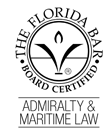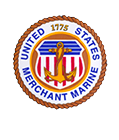New Legislation Hopes To Strengthen Cruise Passenger Safety Laws Including Man Overboard Technology Integration
 In July 2010, Congress passed the Cruise Vessel Security and Safety Act (“CVSSA”); legislation designed to improve the security and safety of passengers aboard cruise ships. Under the CVSSA, vessels are required “to integrate technology that can be used for capturing images of passengers who have fallen overboard, to the extent that such technology is available.” Such requirements were to take effect 18 months after the date of the enactment of the CVSSA on or about January, 2012. To date it is clear that cruise lines have been resistant to implementing man overboard systems. Since the enactment of the CVSSA, there have been approximately 143 persons reported to have fallen overboard from cruise ships. In 2017 alone, there have been 11 reported cases.
In July 2010, Congress passed the Cruise Vessel Security and Safety Act (“CVSSA”); legislation designed to improve the security and safety of passengers aboard cruise ships. Under the CVSSA, vessels are required “to integrate technology that can be used for capturing images of passengers who have fallen overboard, to the extent that such technology is available.” Such requirements were to take effect 18 months after the date of the enactment of the CVSSA on or about January, 2012. To date it is clear that cruise lines have been resistant to implementing man overboard systems. Since the enactment of the CVSSA, there have been approximately 143 persons reported to have fallen overboard from cruise ships. In 2017 alone, there have been 11 reported cases.
Cruise lines such as Celebration Cruise Line, claim that the Coast Guard does not enforce the CVSSA § 3507(a)(1)(D) provision and therefore compliance is optional. Varner v. Celebration Cruise Operator, Inc., 2016 U.S. Dist. LEXIS 137588 (S.D. Fla. Sept. 30, 2016). Disney Cruise Line is the only major cruise company that appears to have integrated an automatic man overboard system while most cruise lines still only rely on safety railings, unmonitored surveillance cameras, eyewitness accounts, and reports by family members or others that a person is missing. Automatic man overboard systems notify the crew when a person has fallen overboard and are equipped with radar and sensors to establish a perimeter around a ship. In the absence of automatic systems, by the time a person is reported missing and a search of the ship is completed including review of closed-circuit TV video, critical time has passed, often many hours, making it practically impossible to find people that have gone overboard.
Two incidents in the past week involving passengers going overboard of cruise ships, show the difference an automatic man overboard system can make. On May 5, 2017, a 61-year-old American man who was travelling alone on-board the Golden Princess cruise ship during a 13-day sailing through the South Pacific went missing. A steward became concerned about the man’s whereabouts and a thorough search of the cruise ship including review of the CCTV video failed to find the man. Thus, the incident is being treated as a man overboard incident.
On May 4, 2017, a man went overboard during a four-night sailing through the Bahamas on-board the Disney Dream. The man went overboard in the early evening and it was immediately noticed by the staff on the ship. Per reports, the U.S. Coast Guard arrived about 45 minutes later and the man was rescued after about 90 minutes and provided medical attention.
To address this and other issues, last month, U.S. Senator Richard Blumenthal and U.S. Representative Jim Himes introduced the Cruise Passenger Protection Act (CPPA) intended to bolster the CVSSA with requirements of the integration of technology that can both capture images and detect when a passenger has fallen overboard, tighter crime reporting, expanded video surveillance equipment and record-keeping requirements among other measures. The bill would also hold cruise lines responsible for deaths at sea by ensuring families of victims are able to pursue fair compensation similar to that of airline passengers.
In 2015, senator Blumenthal successfully amended the Coast Guard Reauthorization Bill to require the Coast Guard to issue a report on the implementation of man-overboard (MOB) technology by cruise lines. In July, 2016, the Coast Guard issued a Notice of Request for Comments inviting comments from the public about the Status of Overboard Detection Technology for Cruise Vessels. The notice indicates that the comments will help the Coast Guard prepare a report on the status and availability of overboard detection technology and will also help the Coast Guard’s collaborate with the International Organization for Standardization (ISO) Technical Committee 8 (TC8) Subcommittee 1 (SC1) which is developing a standard for MOB detection systems.
MARSS SAM, one of three technology companies that submitted comments in response to the Coast Guard request indicates it has developed MOBtronicTM, a proven, in-service, automated man overboard detection system operating at 95%+ probability of detection with false alarm rates of less than 0.3 per 24hr period on average. All other comments including MARSS SAM’s comment in full can be viewed here.
We are hopeful the CPPA will become law addressing many of the remaining issues left unresolved by the CVSSA.












